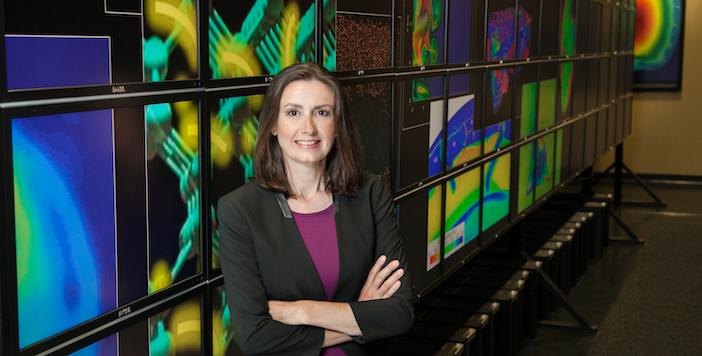
Karen Willcox, director of the Oden Institute for Computational Engineering and Sciences at the University of Texas, Austin discusses an emerging field of computing that could revolutionize how aircraft are designed
While artificial intelligence and machine learning offer efficiencies and opportunities to virtually all industrial sectors, some such as aerospace design must tread carefully because there is virtually no margin for error.
However, the emerging field of “scientific machine learning” may offer greater reassurance to aerospace designers by serving as a secure link that tethers our careful past, which is rooted in physics-based models, verification, validation, test, and evaluation, to a more speculative artificial intelligence (AI) enabled future.
When considering new design applications for AI and machine learning, inspiration is often drawn from domains such as social media, online entertainment and retail. It does not take a degree in rocket science to appreciate that our most pressing problems in aerospace are very different in nature to these computer science applications.
Fundamentally there is a difference in the consequences of the decisions that are made. As engineers, our decisions involve infrastructure, vehicles, systems, and processes where the consequence of being wrong puts people’s lives at risk. It is not okay to be right 99% of the time. We are obligated to do much better than that and the complexity of our design, test and certification procedures reflects that obligation.
There are other important differences. For most aerospace problems the data are often sparse. Experiments are costly, time consuming and sometimes dangerous. The generation of high-fidelity simulation data is also costly and time consuming. Data are hardest to acquire and thus sparsest in the most decision-critical regions, such as when a system is close to failure or instability. Moreover, aerospace systems are often characterized by complex multiscale multiphysics dynamics. Small changes in system parameters can lead to large changes in system response, especially in the most decision-critical regions.
Put together, these challenges mean that our high-consequence decisions in aerospace almost always require predictions that go well beyond the available data. There is a critical need to quantify uncertainty and our associated confidence in predictions to make informed decisions that account for risk.
Despite these challenges machine learning, and more broadly AI, has a role to play in improving our design processes and creating better products.
The key is to keep the challenges firmly in mind and envision machine learning techniques that can embrace the complexities of our engineering systems, while still being firmly rooted in the base of knowledge represented through our connection to physics-based models. This intersection is the emerging field of scientific machine learning.
As we contemplate the future of scientific machine learning, it is important to consider our past. For six decades, computational modeling has been playing a key role in the design of aerospace systems. The aerospace field can take great pride in having played a major leadership role in the foundational ideas, methods and tools that led to modern computer-aided engineering capabilities.
Scientific machine learning won’t replace all that, but it will become another valuable tool in the aerospace designer’s toolbox. To do so it must be built upon the rigorous physics-based foundations of modeling and simulation.
We must think of scientific machine learning not just as “learning from data” but as “learning from data through the lens of physics-based models.’’ This is a step towards predictive data science, bringing together verified and validated computational simulations and verified and validated data-driven approaches to drive insight and decisions in complex aerospace systems.
Karen Willcox is director of the Oden Institute for Computational Engineering and Sciences and a Professor of Aerospace Engineering and Engineering Mechanics at the University of Texas at Austin.
Prior to joining the Oden Institute in 2018, she spent 17 years as a professor at the Massachusetts Institute of Technology, where she served as Professor of Aeronautics and Astronautics, the founding Co-Director of the MIT Center for Computational Engineering, and the Associate Head of the MIT Department of Aeronautics and Astronautics.
Willcox holds a Bachelor of Engineering Degree from the University of Auckland, New Zealand, and masters and PhD degrees from MIT. Prior to becoming a professor at MIT, she worked at Boeing Phantom Works with the Blended-Wing-Body aircraft design group.
"machine" - Google News
July 02, 2020 at 02:51PM
https://ift.tt/31I8qDT
What is scientific machine learning and how will it change aircraft design? - Aerospace Testing International
"machine" - Google News
https://ift.tt/2VUJ7uS
https://ift.tt/2SvsFPt
Bagikan Berita Ini















0 Response to "What is scientific machine learning and how will it change aircraft design? - Aerospace Testing International"
Post a Comment